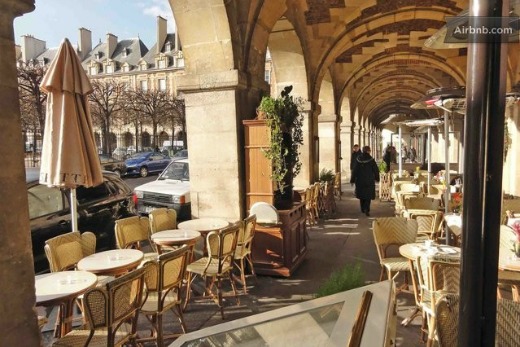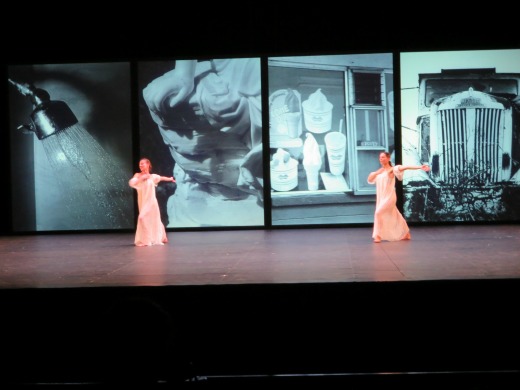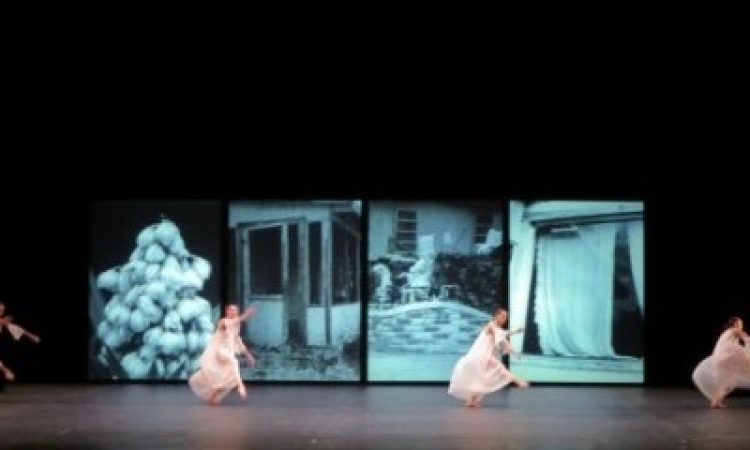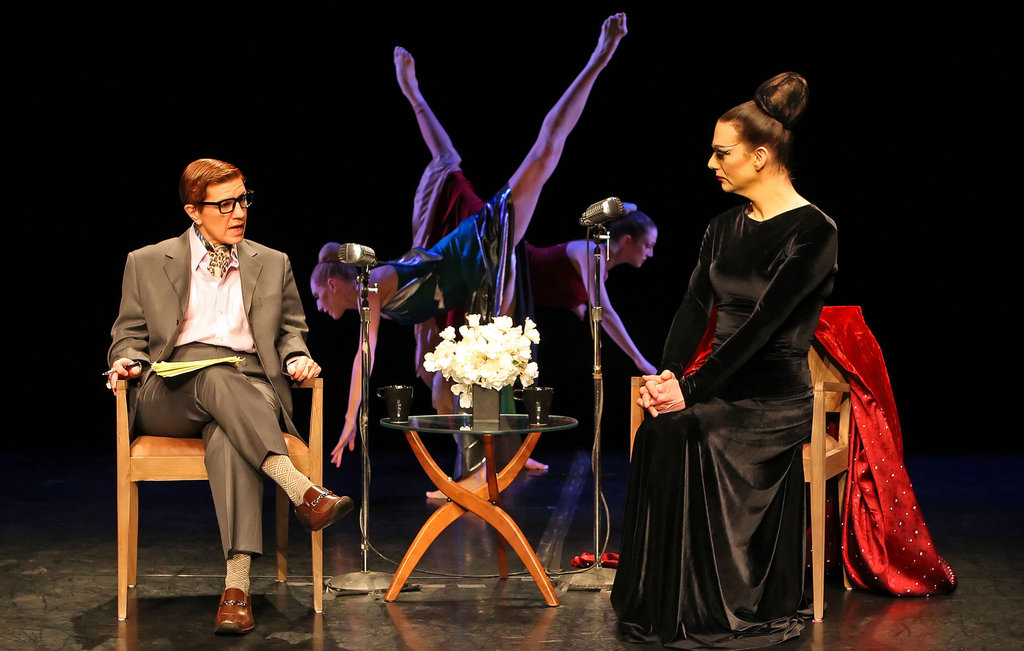
Photo: Carette Tea Salon from airbnb. Rehearsal photos by Lisa Kraus.
On the edge of Place des Vosges, a Renaissance square in the old Marais, there’s a pastry place/tea salon that does a mean brunch. When Diane Madden, Co-Artistic Director of Trisha Brown Company and I ate there last Sunday, she commented appreciatively on these posts but said that she wished I’d write more about the actual teaching of the POB* dancers. So here goes.
The first times I taught at the Ballet (’03 and ’04) I was in a more energetic and youthful body. Not that I am sluggish now, but doing all the movement with the dancers for a lot of their practice is out of the question. So I had to think about what’s essential to show.
That resulted in a way of teaching that is more patient. I initially dance the sequence we are working on multiple times at a relaxed pace. I think of that as being a body-to-body transmission, a chance to let their motor neurons synch up with mine. Only when they have some sense of what the movement is from pure visual/sensed input do I layer on detail about what I see and feel happening in it.
That additional detail could involve breaking down a sequence in language or clarifying a rhythmic song by singing it. In one instance it’s showing and talking about a timing relationship where hands and feet are placed in counterpoint when the usual instinct is to move them simultaneously. We** have to train consciously, slowly, to reprogram. That kind of challenge comes up often, teasing apart usual correspondences. Then there are moments when actions pile up one on top of another, which is also counter-intuitive (unless you are Trisha). Or when weight needs to settle or shift in a very specific way to get properly launched to rebound into the next move.
The spatial demands of the piece involve teaching and reinforcing the target destinations where each action needs to happen onstage (“repairs” in French). They might be on the “Decoy” lines running up to downstage that divide the stage width-wise in even thirds, or on the midpoints between them, or some other established spot between those, for instance “a little stage right of the Decoy.” There are tape marks for the main reference lines which assist the dancers in locating themselves. After they get the side-side relationships we work the upstage/downstage ones – how far each action travels in terms of which wing it is placed near, which “coulisse” a side duet dancer needs to enter from or exit into.
.jpg)
The center duet has similarly exact timing and spatial relationships, but often out of unison and in close interlocking proximity. Carolyn and I teach the movement first, then feel distance and how one action fires off another by dancing with each other and looking at video. Reconstructing what’s like a series of chemical reactions comes through showing, having the dancers embody and then tweaking for a more daring or interconnected action.
The evolution in the ability to do the whole dance is one of being able to hold all the awarenesses—movement fullness and accuracy, spatial and timing precision and partnering interactions—simultaneously.
Generally we give corrections to individuals when they have done a run, pointing out and re-teaching or just reaffirming the correct instructions for what’s off kilter. I declared early in the process that I would be an unabashed “broken record” about certain actions which we know are hard but which we want them to keep working on until they are right.
A slow communal version of cleaning up issues with spatial and movement information involves going through the piece and having everyone stop whenever it’s out of whack. That can be quite a bit of stop and go.
Another way of reinforcing correct spacing is to have everyone (both doers and watchers as there are two casts) say out loud when they are to hit a particular mark. That reminds everyone what the spatial agreements are.
One person a hair off in any of the ways I mention here is quite visible. What that does is distract the viewer’s eye from the full stage picture. Or fail to deliver the movement’s true surge or complexity. So we keep combing.
By yesterday, the day before the Premiere, they had done the spatial work with enough accuracy enough times that we went back to where we started, by combing through all the original movement to recall its nature in moments where it’s gotten blurred.
Glacial Decoy reminds me of what I’ve heard about the San Francisco Bay Bridge: that as soon as they finish painting it (which takes years going from one end to the other), it’s time to go back and begin again. Who knows if that’s true? But thinking of it helps cultivate patience.

What’s a bit unsettling is that I will not see how the piece changes when they perform without either Carolyn or me providing reminders to them. It’s important that their personalities can shine through, but not in a razzmatazz or forced way. It’s important that they feel at home in the dancing but that they not veer off on self-created tangents. It’s vital that they feel spirited and enjoy themselves, but that they stay connected and receptive and accurate in the process.
I gave them a warm up sequence that they can do each time before going onstage that we have practiced a lot already. It involves specific actions, but those can be amended or changed. The most important piece is moving the awareness through the sequence. It goes like this: Spatial awareness (visual and sensing), breathing, weight (through bouncing downward and hanging over), mobility and space between the joints (through figure 8’s), length and lightness (through unfolding and stretching), balance of weight and lightness (through standing), quickly dropping weight and lengthening (through swings and twists), following the body’s wish (improvising with actions above, involving all body parts), awareness of space and other dancers (beginning to dance together).
This little warm up coupled with some time dancing together in the Foyer just before going on stage is what we hope will bring them to a state where they can dance Glacial Decoy fully and beautifully together each time.
I’ll be in Philly. They’ll be dancing in Paris. I’ll send them heaps of “merde” each night.
* * * * *
*Paris Opera Ballet
** Depending on context,”we” in this piece indicates me and the dancers, or me and Carolyn Lucas, Co-Artistic Director of Trisha Brown Dance Company and my partner as “Assistante de la Choreographe” (which is what they term Rehearsal Director), or all three.
Set and costumes by Robert Rauschenberg. Dancers pictured: Letizia Galloni, Juliette Hilaire, Laurence Laffon, Caroline Robert.
To read additional Posts from Paris visit the links here for A Decade’s Difference, Elevators and Etiquette and Dancing Toward a Premiere.






